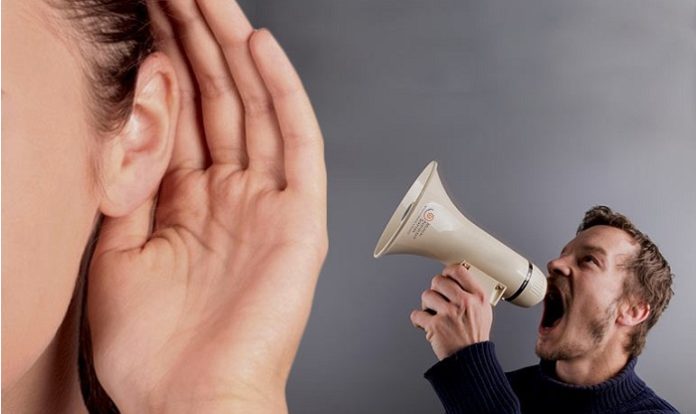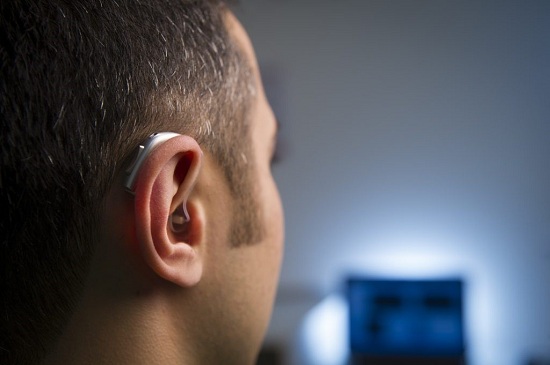Losing one of our senses is never a pleasant experience. When hearing is in question, the situation becomes even more unpleasant because it becomes rather difficult for you to participate in the most common social situations that would never be a problem otherwise. This can be rather isolating from time to time, which is certainly not a great feeling.
Here’s more about the topic in general: https://patient.info/ears-nose-throat-mouth/hearing-problems
It wouldn’t be an exaggeration to say that hearing problems are one of the worst issues that you can experience in your entire life. It is a very distressing situation, especially if you find that it affects both ears and that it just keeps getting worse and worse overtime. Yet, even though it is distressing and unpleasant, it is also very common and a large amount of people have learned how to live with it.
In addition to learning how to live with it, if you find that your hearing is impaired, you will also want to find certain treatment methods that will be able to help you solve the issue. In order to do that, you will first have to get properly informed about the types and the causes of these problems. Of course, you will proceed towards finding the right treatment afterwards.
Getting properly informed, though, is the first step towards treatment. So, let us now first check out the different types of hearing problems and take a look at their particular causes. Later on, we will deal with certain treatment methods that could be of huge help in these situations. We will, however, need to start with the basics, i.e. with the most common types of hearing problems and their causes. Here we go.
Types & Causes
There are three most common types of hearing loss and hearing issues that you should know about. Those are sensorineural, conductive, and mixed hearing loss. Let us now take a look at these three different types individually, so that you can understand them better and figure out what causes each type. You can also go here if you want to get more detailed information about each particular type.
- Conductive
Conductive hearing loss is the type of impairment that is usually caused by some kind of an obstruction in the outer or the middle ear. That way, the obstruction prevents sounds from entering the inner ear, which leads to hearing loss. There are various types of obstructions that can be the cause of this particular impairment. Those include earwax, ear formation, fluid, or benign tumors.
Additionally, infections of the ear are another common cause of this particular condition. In certain instances, even allergies can be the reason for the impairment. And, of course, we cannot fail to mention that, in some cases, foreign objects found in the ear can be the cause of the hearing loss. Those are only some of the triggers and keep in mind that the right medical expert will be able to determine precisely what could be the cause of your specific problem.
When it comes to the treatment of this particular type, we have some good news. Conductive hearing loss can be treated either surgically or with some kinds of medicines. Basically, the obstruction needs to be removed in order for the problem to be solved. This can be pretty easy or it might require some more time and skills, depending on the actual obstruction. In any case, due to the nature of its treatment, the conductive type is regarded as a temporary condition.
- Sensorineural
This is the most common type that affects a large percentage of people nowadays. It occurs when the inner ear nerves, as well as hair cells are damaged. To put things simply, this particular type of hearing loss affects the pathway from your brain to your inner ear. This is usually connected to age, meaning that it is most likely to affect older people, but that isn’t always the case. Noise damage can also be the cause of this particular hearing impairment.
When the cause of the problem is exposure to loud noise, it is important for you to understand that the condition isn’t reversible. Yet, there are ways to prevent further damage. Sensorineural hearing issues, no matter their cause, are definitely all irreversible, but there are things that can help make the situation better. We will get to that in a moment, but let us first finish talking about these causes.
So, in addition to ageing and exposure to loud noises, there are quite a few other causes that you should keep in mind. Head trauma, certain viruses, autoimmune diseases of the inner ear, as well as certain malformations of the inner ear can all be the reason why your hearing is impaired. Of course, tumors can also be the cause of the sensorineural type. As you can see, there are quite a lot of different causes and the right expert will be able to determine the right diagnosis.
If you have done any research whatsoever on this particular topic, then you know that the sensorineural type of hearing loss cannot be corrected surgically, but this doesn’t mean that there is no way you can improve the situation. In fact, hearing aids are the perfect devices that can help in these instances and the best part is that these have become so common and widespread that there are now various types on the market that you can choose from. Of course, you should consult a hearing professional before you decide to buy any devices, but when you do that, you will be able to find the best cheap hearing aid that will be gentle on your budget and yet good for your health
- Mixed
As the name says it, mixed hearing loss is a combination of the two types that I have thoroughly explained above. What does this mean exactly, though? Well, this shouldn’t be that difficult to deduce all on your own, but let me still give you a quick explanation. After all, you do have to ensure that you comprehend everything correctly.
Basically, this is a combination of the conductive damage in your middle or outer ear and the sensorineural damage occurring in your inner ear or in the auditory nerve. This further suggests that the condition can be caused by a combination of other reasons. In other words, there are at least two different causes, given that the damages are also completely different. So, the medical professional you visit will need to determine the causes of both of these types and then recommend the right treatment option for you.
Speaking of treatment options, there is one thing that I need to emphasize when the mixed type is in question. Experts usually suggest that the conductive type gets treated first, so that any possible obstructions are removed before the sensorineural part is addressed. If you have been paying attention to what I have been saying above, the sensorineural part cannot be reversed, which is why hearing aids are necessary in those situations.
Treatment Options
I have briefly touched upon some treatment options above, but now it’s time to take a more thorough and more detailed look into those. As already explained, different types of hearing impairments are treated in different ways. If you remember correctly, the conductive type can be treated by certain procedures and medicines. On the other hand, the sensorineural type calls for hearing aids. Let us quickly take a look at some of those procedures, before we start talking about hearing aids and help you determine which one you should use.
- Wax Blockage Removal
This is probably one of the most common treatment options for these temporary, conductive hearing loss impairments. I suppose you can guess why. It is connected with the cause. After all, you cannot use this particular treatment option if the obstruction is, for example, a foreign object or a tumor. The truth is that hearing impairments caused by wax blockage are rather common.
The best part is, this particular issue is rather easily solved. Your doctor can remove the blockage using suction, or a different type of tool and you can easily get your sense back in no time. As you can conclude yourself, this is the least serious cause of hearing loss and it, thus, requires, the least complicated treatment method. While I don’t recommend it, a lot of people have learned how to do this all alone at home, and if you want to do the same, make sure to get all the right information about how to safely and successfully remove wax blockage at home (additional info).
- Surgical Procedures
Unlike the first method that I have talked about, this one is a bit more complicated and it requires some more time and skills. Of course, it isn’t done in case of ear wax blockage. It is done, for example, when certain abnormalities of the ear drums are discovered, or when you keep on having one ear infection after another. There are various types of surgical procedures, some of which might be more complicated than the others, but when you visit the right experts, all of those procedures will be successfully conducted.
- Hearing Aids
As I have already explained, there are certain types of impairments that cannot be fixed by the procedures mentioned above. In fact, the truth is that they cannot be fixed at all. I’m talking about the sensorineural types that are irreversible. In those particular cases, people will have to wear hearing aids that will help them hear well. These devices aren’t made to restore your sense to its previous state, but while wearing them, you will definitely be able to hear everything as if your sense was never damaged at all.
Now, the important thing to do is find the perfect aid for you. When you begin searching, you will definitely see that there are a lot of different types on the market and it is only logical that not all of those can be perfect. Your research will also show you that these significantly vary in prices, which is certainly another factor you will have to take into consideration when making your particular choice of device.
Naturally, you will want to find the perfect device that will be of high quality and that will definitely help improve your hearing, but you won’t wish to have to pay a fortune for it. Luckily, you won’t have to do such a thing, because you can certainly find the perfect device out there at a completely justifiable and acceptable price. These devices have become so widespread nowadays and this has led to the production of cheaper aids that work perfectly but are accessible to everyone thanks to their low price. That’s what you should aim for.





















